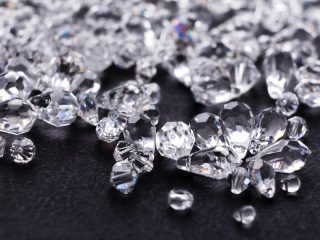Southern Africa has remained a world-renowned treasure trove for precious gems. Millions of years ago, diamonds washed west along the Orange River to empty into the Atlantic Ocean. Some of these precious stones wound up on the beaches of the Namibian Coast and were subsequently snapped up by miners during the 1908 diamond rush. But most found their way to the bottom of the ocean.
This is why, today six ships operated by Debmarine Namibia, a venture between the government of Namibia and De Beers comb the ocean floor looking for these diamonds. So far the venture has been very successful, producing up to 1.378 million carats in 2017 alone. Forecasts from both De Beers and the government expect that number to keep rising. All the while diamond mining over land has continued to wane over the years as miners are less likely to find any diamonds on land.
Debmarine Namibia has put measures in place to gradually ramp up their underwater exploitation and subsequent mining. The venture will in the next 2 years, construct a $142 million ship, measuring about 577 feet long. This is believed to be the world’s largest custom-built mining vessel in the world and it is expected to be fully operational by 2021.
The vessel often referred to as a crawler ship, has a mechanical arm that moves horizontally, dredging material from the bottom of the ocean at a depth of about 400 feet. This mixture of material from the bottom of the ocean is then sifted in an onboard treatment plant to retrieve any diamonds. The separated material is then returned to the ocean and the gems are stored in a secure vault to be transported to shore via helicopter.
The Debmarine Namibia venture holds the license to mine this area of the Atlantic Ocean until 2035. The area the company is allowed to mine encompasses about 2,316 square miles, about half the size of the Island of Jamaica. The ships used in this operation operate 24 hours a day, 365 days a week, but that doesn’t mean that they scour the entire area hoping to find the diamonds.
In an interview with a reputable news organization, the CEO of Debmarine Namibia says that the company must, first of all, identify areas that are mineable and profitable before the vessels can begin work. It is not clear what kinds of studies the company undertakes to determine the viability of a certain area, but the results tell of a well-conducted study. So far, Debmarine Namibia has depleted more than 50 square miles since mining began back in 2002. This is only 2% of the total area they can mine. This indicates that the area in question has quite the potential.
But Debmarine Namibia’s CEO is quick to state that it will not be as easy as simply trawling and then sifting the sediment for the precious gems. He says that the future success of the venture will depend on the company’s understanding of the seabed and the technology used in the mining process. He goes on to say that underwater mining is particularly challenging since you are dealing with a resource that is underwater and you can’t rely on what you see, instead you must rely on what your instruments and data show.
Therefore Debmarine Namibia has employed various methods to study the area and find the most viable areas to mine. The company uses unmanned and autonomous vehicles to survey the area and also makes use of submarines to examine the geology of the area. A larger vessel will then scoop up a large sample of the sediment from that area to further examine its viability.
In combination, these methods have proved very effective, allowing Debmarine Namibia to identify an area of 617 square miles, about a quarter of the total license area containing diamonds. The company hopes to continue to use these methods and other technologies to identify larger areas for exploration.
Debmarine Namibia will be the first to admit that marine diamonds are far more difficult to find and mine than terrestrial ones. But the hunt is well worth the effort because only the best diamonds survived the journey among the Orange River to the bottom of the Atlantic Ocean. The result of nature’s own selection process is that 95 percent of diamonds found at the bottom of the ocean meet “gem quality” as compared to only about 40-60 percent of terrestrial diamonds.
But scientists have questioned the impact of underwater diamond mining on the marine environment. Debmarine Namibia does, however, say that they monitor their footprint continuously, ensuring that their operations do not irreparably damage the marine environment. One of the ways they do that is by allowing a mines area time to recover before mining again.








